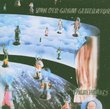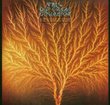| All Artists: Van Der Graaf Generator Title: Quiet Zone / Pleasure Dome (Mlps) Members Wishing: 2 Total Copies: 0 Label: Caroline Original Release Date: 1/1/1977 Re-Release Date: 5/27/2008 Album Type: Import, Limited Edition Genres: Pop, Rock Styles: Progressive, Progressive Rock Number of Discs: 1 SwapaCD Credits: 1 |
Search - Van Der Graaf Generator :: Quiet Zone / Pleasure Dome (Mlps)
 | Van Der Graaf Generator Quiet Zone / Pleasure Dome (Mlps) Genres: Pop, Rock
Limited Edition Japanese "Mini Vinyl" CD, faithfully reproduced using original LP artwork including the inner sleeve. Features most recently mastered audio including bonus tracks where applicable. |
Larger Image |
CD DetailsSynopsis
Album Description Limited Edition Japanese "Mini Vinyl" CD, faithfully reproduced using original LP artwork including the inner sleeve. Features most recently mastered audio including bonus tracks where applicable. Similar CDs
|
CD ReviewsA Different Sound for Hammill & Co. P. McKenna | Atlanta GA | 03/16/2005 (5 out of 5 stars) "With the 1970's drawing to a rapid end and the onset of punk and synth pop beginning to take its toll on the more adventurous, Van Der Graaf (the "Generator" portion of the name had to be removed for legal reasons after Hugh Banton's departure) summoned up one last masterpiece of an album! First off, the band's sound changed significantly, with the departure of organist Hugh Banton (currently enjoying a career building organs) and saxophonist David Jackson (first to truck driving, then teaching math in the British public school system and occasional solo concerts with "Tonewall"). No longer were the songs built on the heavy sax/organ riffing. Instead, piano and violin became the predominant colors in the palette, adding a more impressionistic sheen with more emphasis on melody and shifting colors, supported by the returning Nic Potter's thick fuzzy propulsive bass lines and Guy Evans just playing his heart out on his drum kit (in this writers opinion, some of his best playing is heard here). The songs themselves are nothing less than top notch here, as Peter Hammill unleashes colorfully crafted tales of loneliness ("The Siren's Song"), longing for connection to others ("Lizard Play"), intrigue ("The Wave"), despair ("The Habit of a Broken Heart"), obsession ("Last Frame"), drugs ("Chemical World"), and shameless greed, ambition and arrogance ("The Sphynx In The Face") plus more. Not exactly happy-slappy stuff, but nonetheless very engaging. It's hard to pick highlights, but my favorites are definitely the biting "The Sphynx In The Face" (with some particularly fierce Guy Evans drumming and more time shifts than one can count), the plaintive "Siren's Song" (could be a tearjerker) and the mysterious "The Wave". Sonically, I love the edgy and soaring violins plus the Evans/Potter rhythm section going full tilt with Hammill's assertive piano and his vocal colorings just drawing you in. Some quibbles? Peter Hammill's real strengths are that of songwriter/vocal stylist, plus he is pretty strong on piano too. The weak part for me comes in the guitar department, he just is not a very strong or assertive 6-stringer at all. If the songs really needed guitar at all, he would've been better off to pull in a full blown guitarist to color in where needed. Have to admit too, I do miss the organ as well, but still, that in comparison to the brilliance shown here turns out to be a minor quibble. It's not often you find a band's swan song as brilliant as this, dive in!" Atypical but very good Andreas C G | Huntington Beach, CA United States | 04/03/2008 (4 out of 5 stars) "This album is very controversial. Some people love and some dislike it. AMG actually lists it as their pick among all the VDGG albums. Technically this is not VDGG but VDG. Hugh Banton and David Jackson had left after the previous album, taking with them the trademark organ/saxophone lead instrumentation. For this album Peter Hammill's piano and guitar move to the front, along with a violin player. Nick Potter, a previous VDGG member is brought back on bass. The result is a sound that is very different to any previous albums. Another difference is a focus on shorter songs with simpler structures. It can be argued that this really sounds more like a Peter Hammill solo album than VDGG, but it really is a one-off anomaly in his catalog. One could say that this album, along with "Nadir's Big Chance" and "Over" are transitional works between the progressive rock of VDGG and Hammill's early albums on one hand, and his work after the breakup of VDG(G) in 1978.
The album has two titles, one for each former LP side (released in 1977). The first half has shorter and simpler songs, while the latter half has somewhat more involved songs. The overall sound is more subdued, largely because of the instrumentation, but also because of Hammill's (relatively) more subdued singing. The streamlined sound does allow Hammill's lyrics to stand out more, and in most cases they are of the usual high quality. The songs in the first half are all quite good, particularly "Last Frame" and "The Wave", which has become a concert staple. "Chemical World" is one that I like a lot, with a very striking vocal and acoustic guitar intro. "Sphinx in the Face" is pretty good, except for the falsetto chorus at the end, which irritates me (and which they unfortunately choose to bring back for a reprise at the end). Yellow Fever / Cat's Eye (Running) is a song which Hammill seems to like a lot (he named it 3 times!), since he has released several versions - I now own 4. I must say that I don't share his enthusiasm for it. A review I read commented that it sounds like Hammill was trying to do an ELO song. On this track I find the violin to be very grating, and I just don't like the song. On other tracks the violin works very well, usually playing a role roughly analogous to what David Jackson did previously. I was initially not that impressed with this album, but I have gotten to like it a lot with repeated listenings. As with anything, it helps to approach it without preconcepttions of what it ought to be. If you listen to it as a VDGG album, or as a "prog-rock" album, you might not appreciate it. If you look at it as part of the continuum of work that Hammill has done with VDGG and solo, it fits in very well. In a nutshell, it probably shouldn't be the first one you buy, since it is not really representative of VDGG or Peter Hammill's solo work (it's probably closer to the latter). Nevertheless it's a very enjoyable album which fans will want to get. " |

 Track Listings (12) - Disc #1
Track Listings (12) - Disc #1


